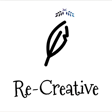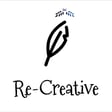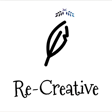
Meals on Wheels Charity Edition: Ruth Abernethy
This is a special re-broadcast of an episode of Re-Creative as a part of Podcasthon: "The world’s largest podcast charity initiative, bringing together podcasters globally to raise awareness for charitable causes."
The charity we wish to support is Meals on Wheels.
Ruth Abernethy, sculptor of some of the most iconic public art in Canada, joins the podcast to discuss her work.
Ruth has been a sculptor for more than thirty years, documenting in bronze many quintessential Canadian figures, such as Glenn Gould, Oscar Peterson, and Margaret Atwood.
Her connection to the theatre world goes quite deep. She began her career at Stratford, creating the sets and decorations that helps the festival bring Shakespeare to life.
Her commissions can be found across Canada, including at Queen's Park, Ontario's legislature, where visitors can see her rendition of Queen Elisabeth II, near Queen Victoria.
Mark, Joe and Ruth have a fascinating conversation about Ruth's work, her passion for creation, and her recent book.
For fans of art, this is an episode not to be missed!
For more information, check out the show notes for this episode.
Re-Creative is produced by Donovan Street Press Inc. in association with MonkeyJoy Press.
Contact us at joemahoney@donovanstreetpress.com


